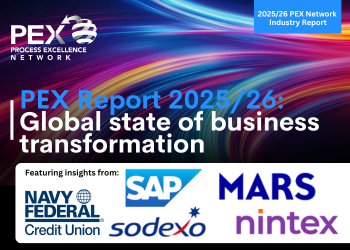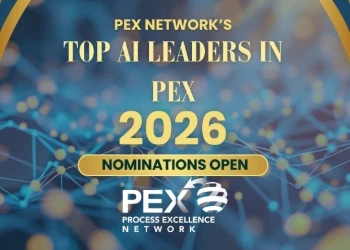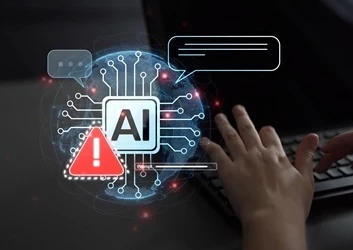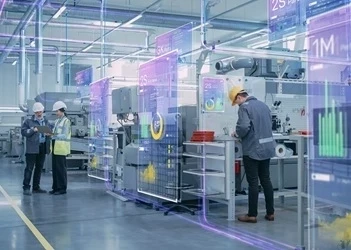Process optimization: A key ingredient for agentic AI success
In order to maximize the potential benefit of automation, the end-to-end process must first be intrinsically optimized
Add bookmark
With the ever-expanding capabilities and usage of Large Language Models (LLMs), it is critical to understand for which operational processes these tools can be leveraged and how.
Considering LLMs have provided the foundation for agentic artificial intelligence (AI), a subset of AI that focuses on autonomous, goal-driven process execution, continuous improvement leaders need to be intimately aware of where tools such as agentic AI may be employed to carry out business operations.
Automation in any form can be an incredibly useful tool when leveraged appropriately. However, what is also true is that something designed to be incredibly helpful can also be painfully detrimental to business operations.
Join the PEX Network community

Don't miss any news, updates or insider tips from PEX Network by getting them delivered to your inbox. Sign up to our newsletter and join our community of experts.
Learn MoreAutomation relies on the quality of the process
Using robotic process automation (RPA) as an example, studies performed by multinational professional management companies cited how anywhere from 30-50 percent of RPA projects failed to meet expectations. Why? The problem isn’t the technology; the problem resides in the process in which the technology is introduced.
The efficacy of any automation relies on the quality of the process itself. Said another way, if the process is sub-optimal, automation will only exacerbate issues and complications that arise due to process inefficiencies.
In order to maximize the potential benefit of automation, the end-to-end process must first be intrinsically optimized. This truism also applies to automation driven by agentic AI.
Register for All Access: AI in PEX 2026!
The rise of agentic AI
Agentic AI drifts away from human intervention and relies on a set of predetermined goals, or user-defined rules, to execute a process. AI agents can be narrow in scope, executing a single task to completion. On the other hand, AI agents can be a part of a larger network of agents (a multiagent system) in an architecture designed to solve more robust processes and workflows.
This broad range in scope, along with an ability to adjust behavior over time by learning from experience, makes it easy to empathize with the organizational appetite we are witnessing across various industries to deploy AI agents into business operations. This is the precise point, though, where it is necessary to ask a question constitutional to continuous improvement – what is the process and why?
Join us for All Access: Agentic AI 2026!
The criticality of process optimization
By first evaluating the end-to-end process and calibrating our understanding of why the process exists in the first place, we center our curiosity on two base requirements of high-efficacy AI agents – the goal of a process and the rules that act as procedural guardrails.
Additionally, through a targeted evaluation, teams can first implement process changes and then hand-off an optimized process to an AI agent, thus fast-tracking outputs of optimal results. Further, if any additional optimization opportunities do exist, they may be uncovered by the self-learning capabilities of AI agents.
When we investigate a process, for agentic AI or otherwise, it is imperative to first understand why. This helps ground our perspective in the value of the process to the organization. More than that though (and specifically when it comes to agentic AI), the criticality of process evaluation lies in the need to establish procedural boundaries for AI agents to prevent unintended consequences of the automation.
While Agentic AI can be a powerful tool, it is still beholden to a structural maxim – technology on a suboptimal process often only magnifies inefficiencies.
PEX Report 2025/26: Global state of business transformation

The PEX Report 2025/26 examines the results of our annual survey of more than 200 professionals with insights from more than a dozen industry business and thought leaders from across the globe. Contributors include leaders from Mars, Navy Federal Credit Union, Pacific International Lines, Sodexo, SAP and Nintex!
Explore why true business transformation is not a singular project but an ongoing journey, one that requires visionary leadership, cross-functional collaboration, technological prowess and an unrelenting commitment to agility and innovation. Those that embrace this evolution holistically are not just surviving the future, they are shaping it!
Download Now
















